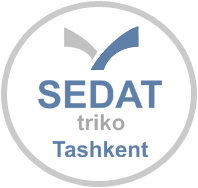Textile production has two distinct technological phases: mechanical (spinning, weaving) and chemical (cleaning of textile materials, coloring, final finishing). These two distinct phases are fundamentally different in their scientific and technological basis. Mechanical technology is based on the principles of mechanics of solid, continuous media (fiber, yarn, fabrics, knitted fabrics) and chemical engineering (finishing) based on all the chemical sciences: general theoretical chemistry, the inorganic, organic, physical and colloid chemistry, and others. Without knowing all the latest theoretical and practical achievements of chemistry can not be correctly generate and implement an efficient finishing of textiles.
Chemicals in textiles began to play a role even before the finishing of textile materials, with the first contact (spinning) with a textile fiber. Fibers – a wide variety of polymeric materials (fiber-forming polymers), each member of which has its own chemical and physical properties and requires its own specific processing not only in the finish, but also in spinning, weaving, manufacture of knitted and nonwoven materials. Development of the global range of the fibers is by its laws. The first trend – a significant change in the balance of fiber intake from natural chemical (50%), mainly to synthetic (polyester, polypropylene, polyurethane, ultra different nature), which determines the development and formation of the range of dyes and textile auxiliaries.
The second trend in the production of textiles is a growing role of materials from a mixture of fibers. Since cellulose (natural or artificial) is about 50% of the fibers used and mixed textile materials (primarily a mixture of polyester and cellulose fibers) comprise approximately 25% of global production of textiles, the dominance in the range occupied by textile dyes pigments (more than 40% in print mixtures), active (for cellulosic fibers) and dispersed dyes (for polyester fibers).
In a world of manufactured several thousand brands of dyes – different classes and different companies, and they are very often the same in structure, but are available under various trade names. These dyes differ in quality of different ways (the content of the colorant dispersion, additives), and textile workers is not easy to understand in this ocean of brands, as each producer or intermediary only praise their products. Russian Union of Chemists Colorists long and successful acts in the role of objective and independent of the collective expert in these matters. Such a situation in the market and TIA, the number of which in the global range is a few hundred. It should be emphasized that the price of dyes and textile auxiliaries is not the only criterion for selection, sometimes relegated to the second, third, and so on. D. Insignificance compared with other indicators (economical and environmentally friendly technology throughout). Only an objective comparative analysis of the proposed dyes and textile auxiliaries allows to choose the right type (genus, species) of the dye and textile auxiliaries.
The greatest success in the manufacture of dyes and textile auxiliaries seeking firms not only produce high-quality dyes and textile auxiliaries (better in the kit), but also provide technological service when they are used for the specific production of textiles (range, equipment, customer requirements).
How important it is to provide not only a textile dye, but TIA, as exemplified by the pigments for textile printing. For this technology, in addition to high-quality pigments wide range of textile workers need to have a complete special thickeners and binders. That is what the firms producing pigments for textile printing (German BASF, the Swiss Clariant, etc..). Tambov JSC “Pigment” successfully mastered the production of pigments, but does not complete their binders and thickeners and, unfortunately, lost in competition with foreign firms.
If we consider the evolution and revolution of finishing production as chemical technology, the revolutionary, breakthrough solutions for the last 5 – 10 years should include expansive promotion of enzyme biotechnology in all phases of finishing production, particularly in the preparation of (biorasshlihtovka, biootvarka) and the final finish (biopolishing ). On the world market has a wide range of enzymes for textile processing, including domestic ones.
By evolutionary solutions should include the improvement of different ways of dyes and textile auxiliaries, creating convenience of their use in the finishing industry (fine, non-dusty, liquid form). Companies – manufacturers of dyes and textile auxiliaries, taking into account these trends, win competition in the textile market. Domestic manufacturers of dyes and textile auxiliaries while learning these laws of the market; it is desirable that this study took place faster. This will benefit both they and textile.
TBB take particular role in the final finishing of textile materials, which are finally formed consumer properties of the finished textile materials and thus their quality. Therefore saving on finishing agents TBB not justified, moreover, economically unprofitable, as it would not produce a competitive textiles, especially for export.
Effective final finishing of textile materials based on the success of polymer chemistry because this technology uses ready polymeric materials (water dispersion), the synthesis of the polymer directly on the fiber (polycondensation polymerization) or polymeranalogous converting fiber-forming polymers.
Tendency final finishing of textile materials is to provide the consumer permanence of the effect (resistance to repeated washing) is achieved, as a rule, form a strong chemical bond between the coupling agent and the fiber. Coupling agents of this type are in high demand because they provide a high quality finished textile materials.
Unfortunately, most of the drugs, which form a permanent covalent bond to the fiber, are formaldehyde-urea derivatives and tend to use and storage conditions of textile materials emit harmful formaldehyde to human health.
The textile market appeared sizing agents with low-formaldehyde or not containing it. Preparations of this type is more expensive, but for a certain range (children, underwear, textiles for interiors, etc..) Their use stipulated by the customer, which is quite justified.
+(99871) 253 95 40 info@sedattriko.uz




